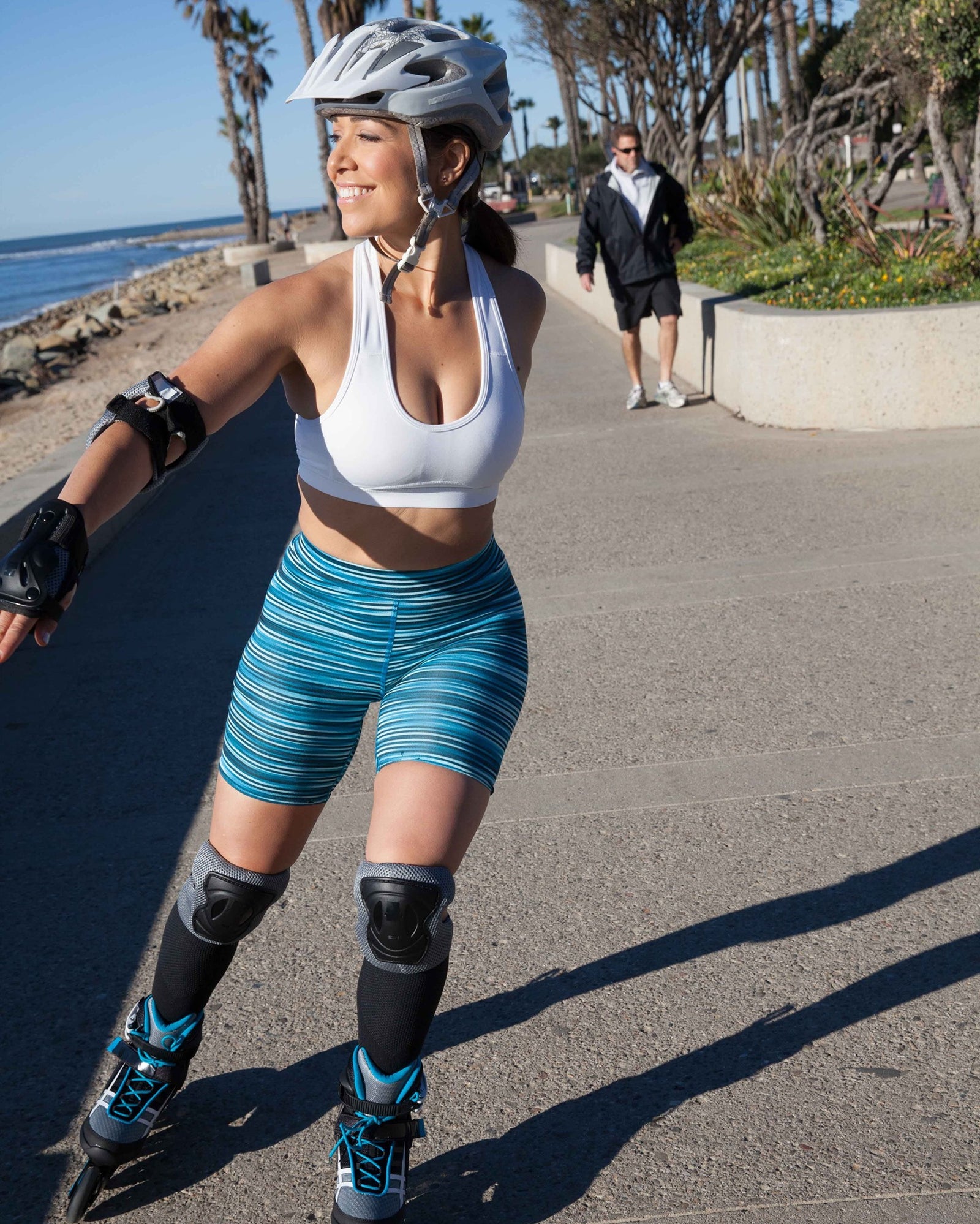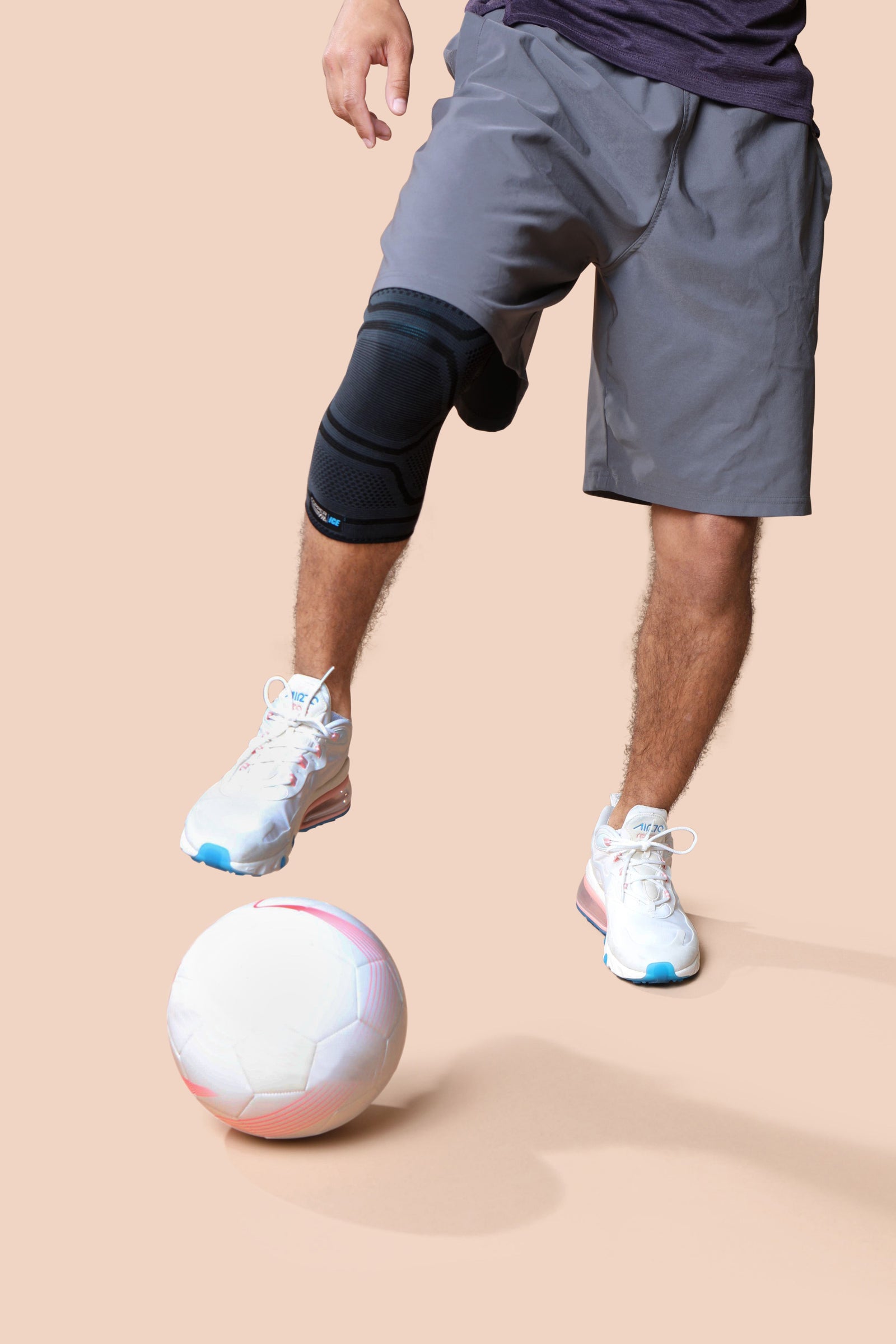
Key Takeaways
- Running on sand can strengthen stabilizing muscles, improve balance, and enhance calorie burn while being easier on joints than pavement.
- Beach running comes with unique challenges, like increased soreness, heat exposure, and uneven surfaces, but these can be managed with proper technique.
- Performance and recovery strategies, including compression gear, hydration, and hot/cold therapy, can help support circulation, ease discomfort, and keep you moving.
There’s something uniquely rewarding about running on the beach. The sound of the waves, the fresh air, and the challenge of sand make it an effective and refreshing workout. But running on sand isn’t the same as hitting the road or treadmill. It engages your muscles differently, changes the way your body absorbs impact, and requires a thoughtful approach to recovery.
This guide breaks down the benefits and challenges of beach running, explains proper technique, and shares practical performance and recovery strategies to help you feel strong and confident with every stride.
The Benefits of Running on the Beach
Running on the beach offers a wide range of physical and mental benefits that make it more than just a change of scenery. The unstable surface of sand engages stabilizing muscles in the legs, ankles, and core, helping build strength and endurance.
At the same time, the softer surface can reduce stress on joints compared to pavement or concrete, making it an appealing option for athletes and everyday runners alike. The extra resistance of sand also increases calorie expenditure, giving you a more efficient workout in less time.
Over time, this can improve cardiovascular endurance and overall stamina. Beyond the physical rewards, running on the beach can support balance and agility, since the body constantly adjusts to maintain stability on shifting ground.
There’s also the mental health factor. The natural environment, wide-open space, and fresh air help promote relaxation, improve mood, and reduce stress. Many runners find the ocean setting helps workouts feel less like a chore and more like an energizing experience.
The Challenges of Running on the Beach
While beach running has clear benefits, it also comes with unique challenges that should be taken seriously. The uneven and shifting surface of sand places greater demand on the calves, hamstrings, and feet, which can lead to increased muscle fatigue and soreness if your body isn’t prepared.
Running in soft sand is especially demanding, and without proper adaptation, it can increase the risk of tension in the joints and muscles. Environmental conditions add another layer of difficulty.
Sun exposure, reflective heat, and strong winds can make beach running more physically taxing than expected. Timing also matters; running at high tide means less firm sand to work with, which can make your workout much harder.
Another challenge is the risk of overtraining. Because beach running feels different and often more exciting, beginners may push themselves too hard, too quickly.
This can result in excessive soreness or longer recovery times. With proper pacing and gradual progression, however, these risks can be managed effectively.
Proper Form and Technique for Beach Running
Once you're aware of the unique benefits and challenges of beach running, you can plan your training with them in mind, allowing you to get the most out of your beach run.
Start Slowly
Introduce beach running gradually. Begin with shorter sessions and build up time and intensity as your body adjusts to the new demands.
Choose Wet Sand
Running near the waterline provides a firmer surface that’s easier on your muscles and joints. Dry, soft sand should be reserved for shorter, more advanced drills.
Maintain Upright Posture
Focus on staying tall with your shoulders relaxed and your eyes forward. Correcting your running posture helps your body move more efficiently and reduces unnecessary strain.
Shorten Your Stride
Quick, controlled steps provide better stability on unstable ground. Shortening your stride helps you maintain balance while easing the workload on your joints.
Consider Barefoot Training With Caution
Running barefoot can strengthen foot muscles, but it should be done in short intervals and only after your feet have adapted to the new demands. Be mindful of hot sand, shells, or sharp objects.
Breathing Rhythm
Steady breathing helps support endurance. Syncing your breath with your stride can keep you relaxed and focused.
Tips for Performance and Recovery
Before hitting the sand, make sure you’re body is prepped for the task with the following tips.
-
Warm Up: Starting with dynamic movements, like leg swings, lunges, and ankle rolls, activate muscles and prepare them for the added resistance of sand.
-
Hydrate and Refuel: The combination of heat and reflective sun makes hydration critical. Drink water before, during, and after your run, and replenish electrolytes if you’re training for extended periods.
- Try Compression Gear: Compression socks and sleeves can help support circulation during and after runs. They also help ease muscle soreness and promote recovery by providing gentle, consistent pressure.
- Stretch and Mobilize: Target the calves, hamstrings, and hips with gentle stretching. Adding ankle mobility drills helps restore flexibility and prepare your body for your next run.
Safety Considerations and Best Practices
-
Run Early or Late : Midday sun can be intense. Morning and evening runs are cooler and more comfortable.
-
Protect Your Skin : Apply sunscreen and wear protective gear like sunglasses or a hat.
-
Check the Tides : Running at low tide gives you more stable ground and reduces effort.
-
Balance Your Training : Mix beach runs with road or track sessions to avoid overworking muscles.
- Footwear Choices : Lightweight shoes protect from sharp objects, while barefoot running can strengthen feet if done carefully.
Training Plans: How To Incorporate Beach Running
Your experience level with running may change how you want to approach beach running. Consider the following recs as you build beach running into your training plans.
Beginner
Run 1–2 times per week for 20–30 minutes on wet sand. Focus on steady pacing and short strides.
Intermediate
Mix in interval training on sand with longer runs on firmer surfaces. Alternate days to allow proper recovery.
Advanced
Incorporate hill sprints or short bursts on dry sand to build explosive strength and power. Always balance with adequate recovery strategies.
Cross-Training
Use beach running as a supplement, not a full replacement. Combining it with road runs and other training ensures balance and prevents overuse.
FAQs
Is running on the beach better than running on the road?
Both have benefits. Road running offers consistency, while beach running builds strength and balance. The softer surface of sand may also reduce joint stress.
Should I run barefoot on the beach?
It can be helpful for strengthening foot muscles, but it should be introduced gradually and only for short distances. Always check the surface for hazards before trying.
How can I recover faster after beach runs?
Support your body with hydration, gentle stretching, and compression gear to promote circulation and soothe soreness. Adding hot or cold therapy can further support recovery.
The Bottom Line
Beach running challenges your body in new ways while offering fresh air and beautiful surroundings. It builds strength, improves balance, and supports cardiovascular fitness, but it requires thoughtful preparation and recovery.
At Copper Fit, we know how important it is to stay active while managing soreness and tension. That’s why our compression gear is designed to support circulation, help soothe discomfort, and keep you moving, whether you’re training on the beach, the road, or anywhere in between.
Sources:
An Analysis of Running Impact on Different Surfaces for Injury Prevention | PMC
Proper Running Form: 8 Tips to Improve Your Technique | Very Well Fit





